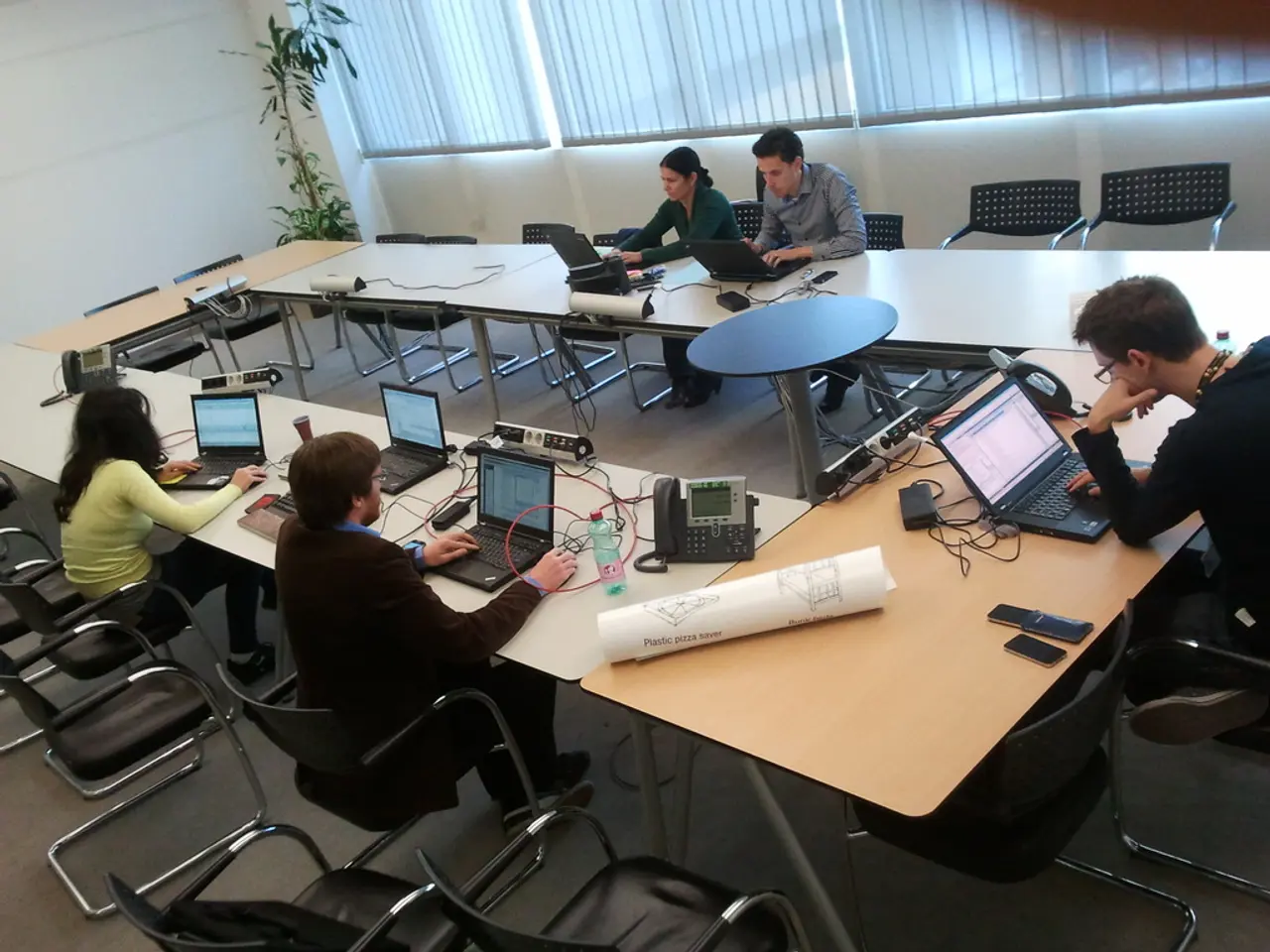One Million Workers Resigned Over the Past Year Due to Inadequate Flexible Work Options, Warns Expert: Neglect Hybrid Work arrangements at Your Own Risk
In today's dynamic job market, the hybrid work model is gaining momentum as a strategic approach that benefits both employees and employers. According to the CIPD data, employees are increasingly prioritising their work-life balance, and a hybrid model allows them to tailor their work environment to their individual needs, enhancing job satisfaction and productivity.
For employees, the hybrid work model offers flexibility in work location and schedule, which is linked to lower burnout and better time management. This flexibility also helps reduce commuting stress and expenses, contributing to their overall well-being. For employers, hybrid work supports higher productivity by allowing employees to work where they are most effective and fosters a motivated workforce through enhanced job satisfaction and engagement.
In a competitive job market, the ability to offer flexibility can be a significant differentiator in attracting top talent. Companies offering hybrid work are seen as more appealing, leading to improved retention and attracting a wider range of skilled candidates globally. The model also reflects a modern understanding of employees’ needs, increasing competitiveness in the job market.
However, some managers perceive collaboration and innovation to be stifled in a remote environment. To address this concern, hybrid models can balance remote work with in-person interaction, which is important for team coordination and company culture. This balance fosters a sense of community and allows for greater focus and productivity in quieter home settings.
Aman Parmar, Head of Marketing at Bizspace, offers insight into how businesses can create an environment that caters to diverse employee needs by offering a range of work options. Tapping into a wider talent pool through an accommodating approach allows businesses to drive innovation and creativity through diverse perspectives. Employers who refuse to embrace hybrid working may miss out on top talent in a rapidly evolving job market.
The traditional 9-to-5 office model is becoming increasingly outdated among employees. Flexibility is no longer merely a desirable attribute; it is a fundamental aspect of the modern workplace that can drive success for employees and employers alike. The concept of flexible work arrangements has gained immense traction, especially post-pandemic.
Organisations that stick to traditional models may struggle to attract and retain the best candidates. On the other hand, a dynamic workplace that caters to diverse employee needs can drive engagement and innovation. Hybrid work combines the perks of remote work with the benefits of in-person interaction, boosting creativity and teamwork.
Companies that disregard the benefits of hybrid work may face higher turnover rates and decreased employee satisfaction. Accommodating the specific needs of each individual is crucial for fostering a truly inclusive and supportive workplace. Some employers express concerns about productivity, fearing that without direct supervision, employees may become distracted or disengaged. However, the evidence suggests otherwise, with the hybrid model leading to increased productivity and job satisfaction.
In summary, the hybrid work model aligns employee well-being and productivity with business goals of cost efficiency and talent acquisition, making it an increasingly vital strategy in today’s labor market. Embracing flexibility is no longer an option but a necessity for businesses that aim to thrive in the modern workplace.
[1] CIPD (2021). Working and managing remotely: Employers' experiences and practices during the coronavirus pandemic. [2] CIPD (2022). Flexible working during the pandemic: The future of hybrid work. [3] Gallup (2021). State of the Global Workplace Report 2021. [4] Harvard Business Review (2021). The Surprising Benefits of Hybrid Work.
- Aman Parmar, Head of Marketing at Bizspace, states that businesses can foster diversity and drive innovation by adopting a range of work options, such as the hybrid work model, which caters to employees' needs and attracts top talent beyond traditional borders.
- In the changing landscape of work, where flexibility has become crucial for both employees and employers, technology plays a significant role in enabling the smooth integration of lifestyle choices into the general-news cycle, making hybrid work possible and beneficial for all parties involved.




